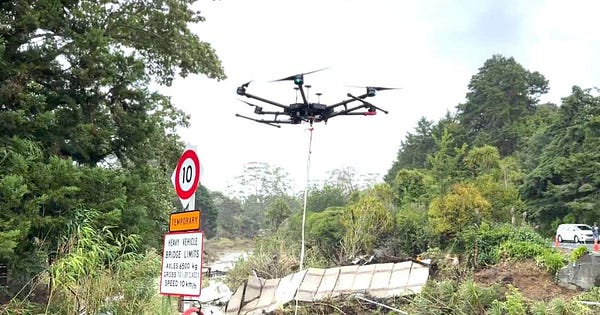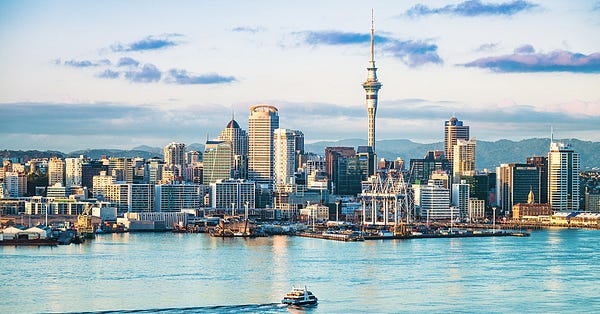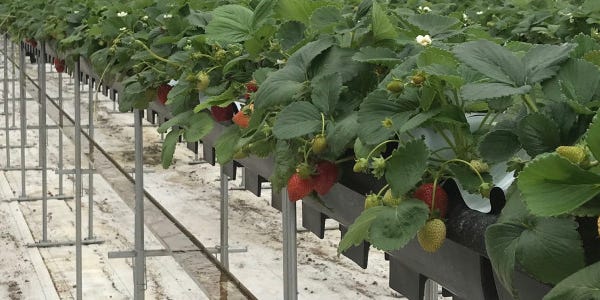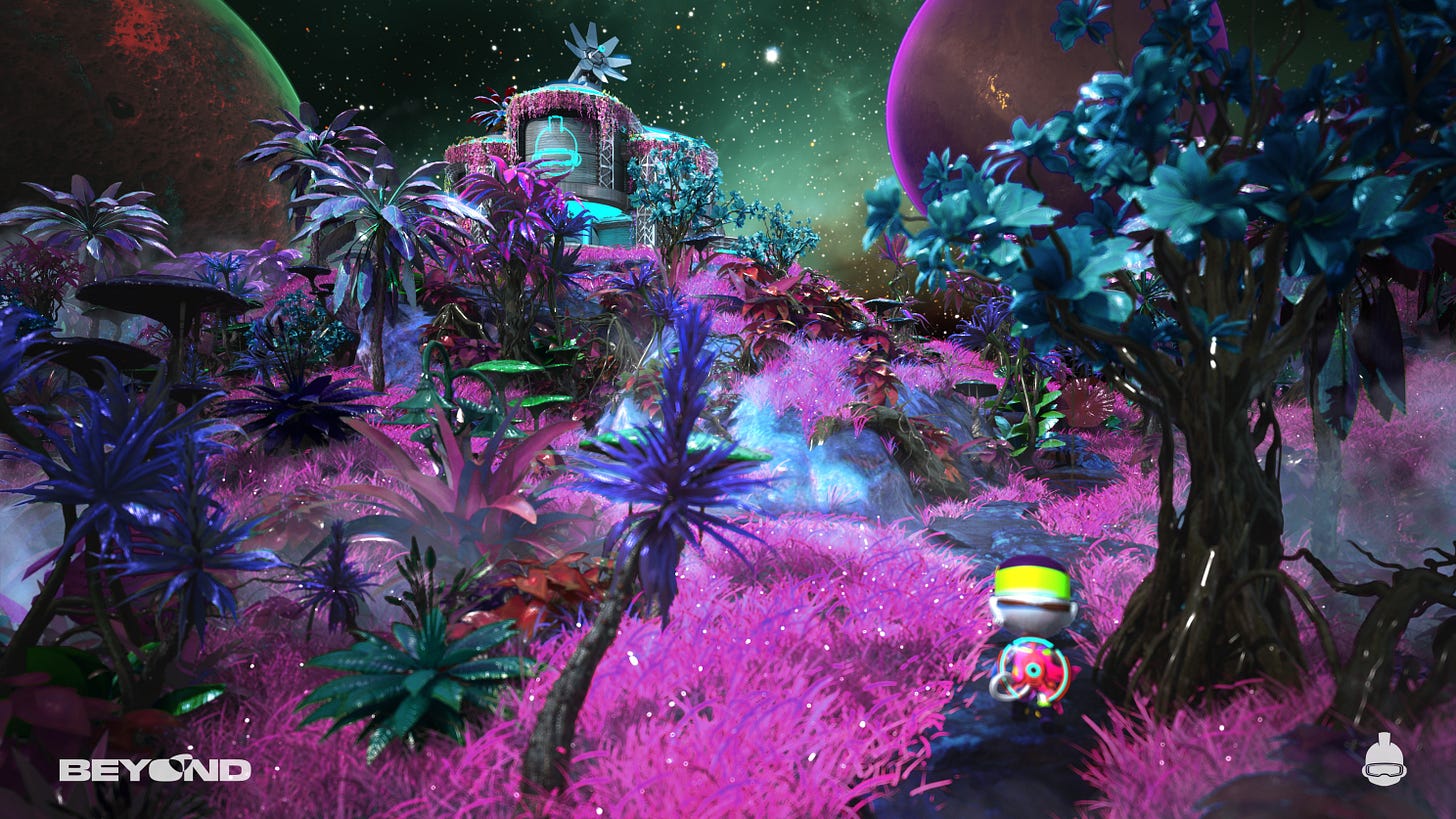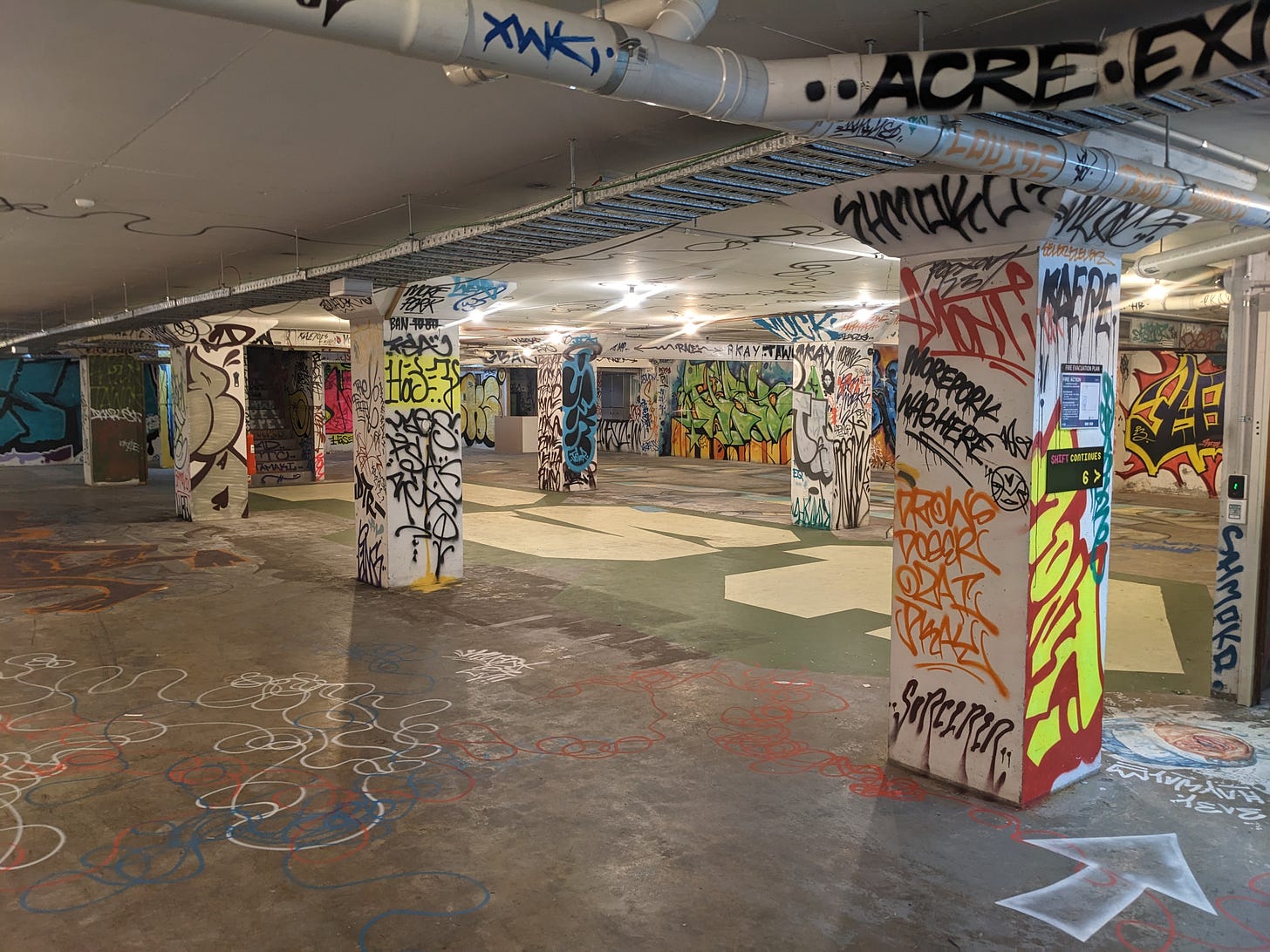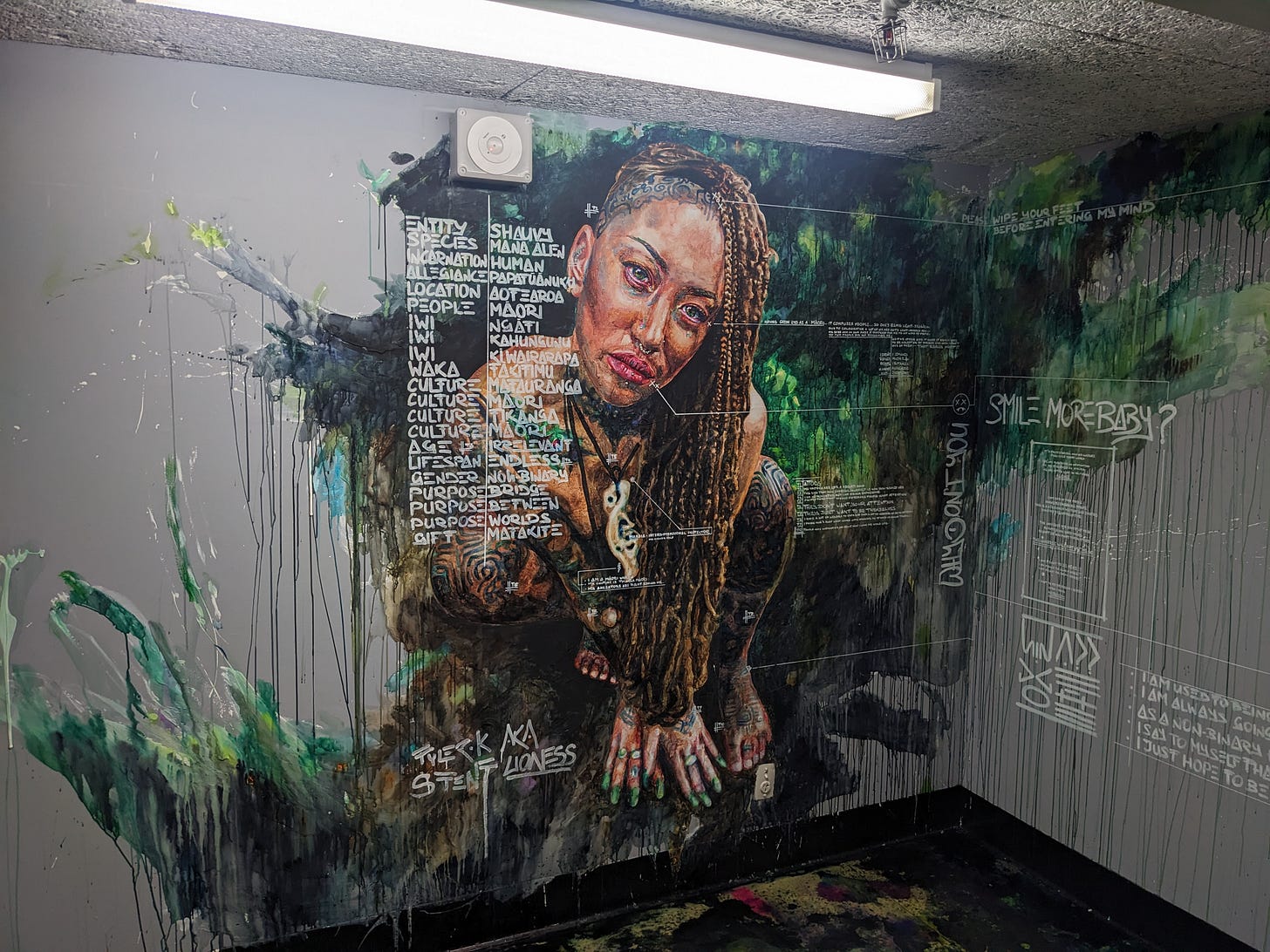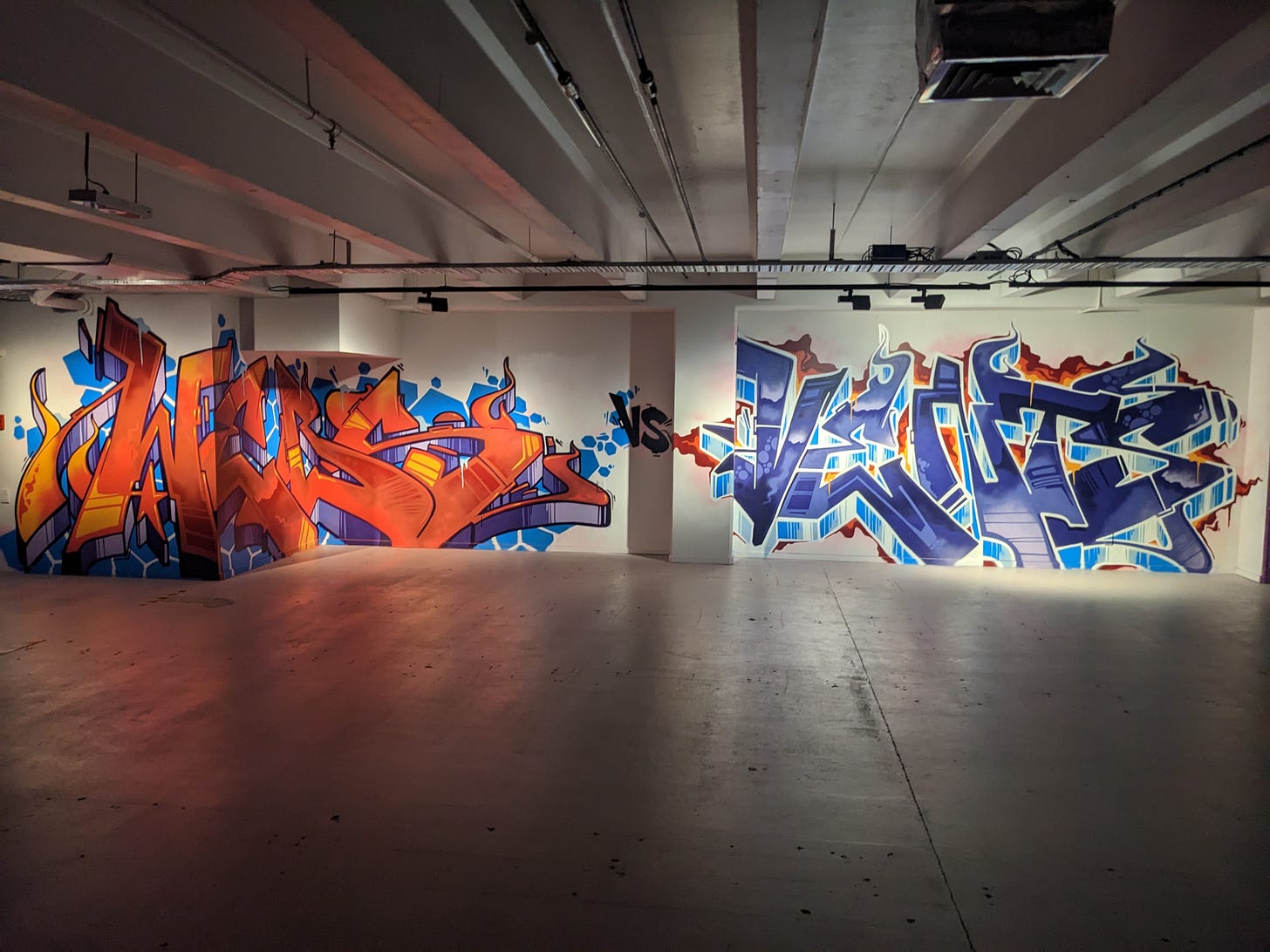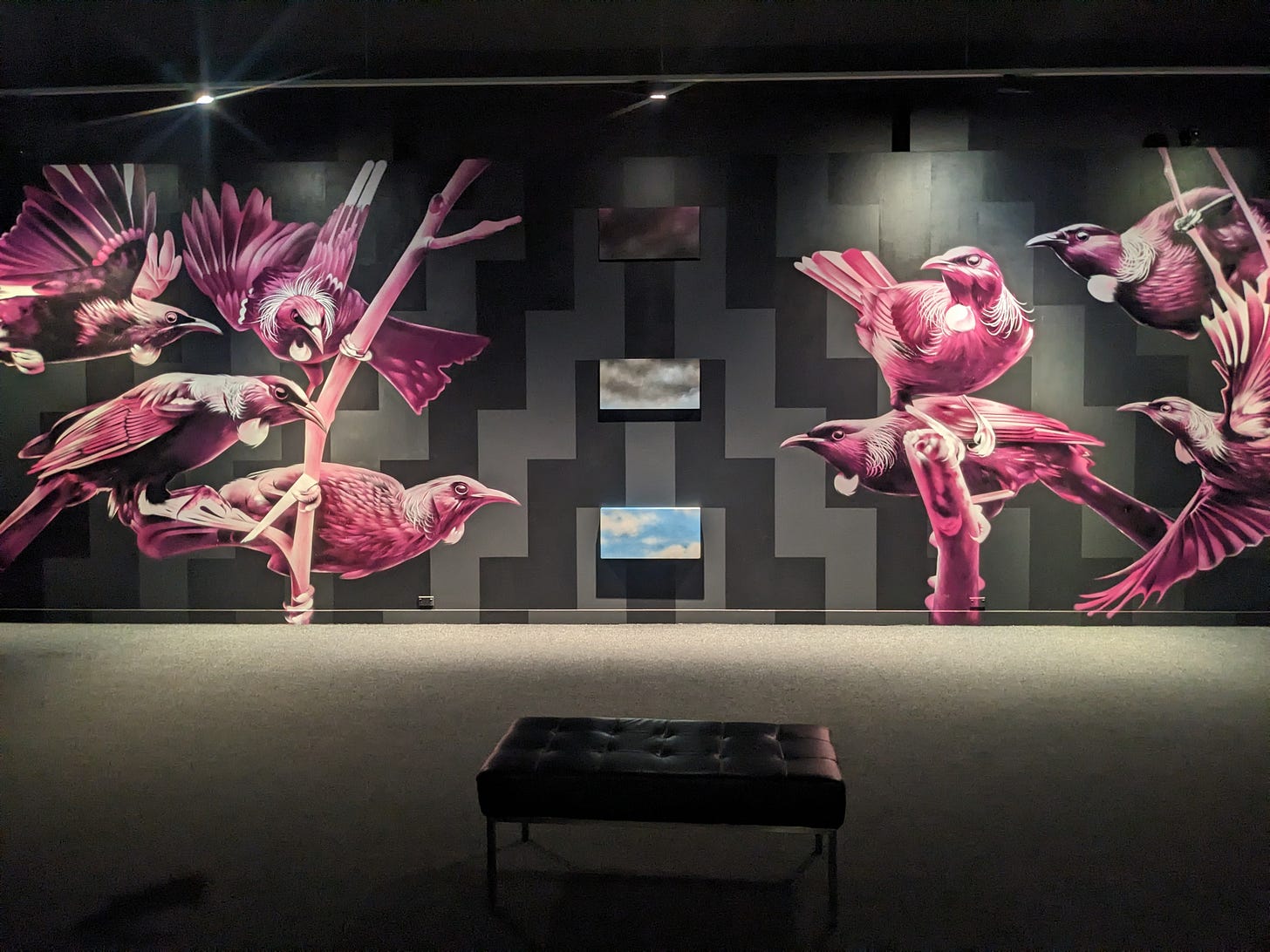⏩Fast Forward Aotearoa #27: 🌧️after the flood…🥵the heatwave🍓growing indoor strawberries at scale🏗️construction disruption?⚐data sovereignty vs generative AI⏩more solutioneering…
💯Get SHIFTed
Kia ora,
Welcome to this week’s Waitangi holiday weekend ⏩Fast Forward Aotearoa instalment, scanning and thinking about technology with a focus on future Aotearoa New Zealand.
In today’s issue:
After the flood… the heatwave
Plastic in the air, everywhere
Growing strawberries indoors — at scale — in Hawke’s Bay
Construction disruption? A new report on Aotearoa’s residential building sector predicts a slow path to automation and industrialisation … how to speed things up?
Data sovereignty vs. generative AI… understanding the new landscape
Rollcall: A podcast on conservation AI and a VR world launch
Get SHIFTed: My writeup and photos from the incredible new SHIFT Urban Art Takeover at Canterbury Museum
This week’s book instalment (below the paywall)…MORE solutioneering
⏩Ffwd inbox
Several insightful responses to John McDermott’s guest contribution last week on AV corridors vs rail in⏩Fast Forward Aotearoa #26, including this from a mechanical engineer:
“Rail is optimised for very heavy cargo at very low maintenance intervals with low rolling resistance, an AV roadway would not be able to get close to matching the potential carrying capacity or efficiency of rail. Physics fundamentals mean that we’d be best off using the rail corridors for rail and simply getting truck freight onto rail.
But… rail isn’t used to anywhere near it’s potential in NZ, so maybe that makes it a moot point.”
And regarding the idea of reinstating a “Ministry of Works” model for modern, climate-resilient national infrastructure investment:
“…I think [it’s] an inevitability to see a 21st century Ministry of Works. The general public would be shocked if they ever found out how much is now spent on engineering and planning consultants that used to be part of MoW…”
Indeed. Also this week:
🌧️After the flood…
The north is starting to clear up after last week’s deluge, with a multi-year insurance response now being estimated to cost closer to NZ$1Bn.
Some drone tech spotted out and about in the immediate fix-up:
🥵…the Heatwave
Meanwhile, Saturday was sweltering across the whole country (especially here in Ōtautahi)…Has this ever happened before?
♳Plastic in the air, everywhere
Despite our remote location globally, Aotearoa is not sheltered from the world’s plastic air pollution. New research reports that a mist of microplastics is constantly drifting across largest city Tāmaki Makaurau. The research team led by Joel Rindelaub of Waipapa Taumata Rau / University of Auckland found that:
“at least 74 tonnes of plastic—the equivalent of 3 million plastic bottles—are falling on the city in a year.”
Writeup in Eos, click tweet below(🎩 spotting Dad!):
🍓Growing indoor strawberries at scale
Japanese company Tatsumi have opened a huge new indoor strawberry farm near the Hawke’s Bay town of Clive. The glasshouse facility aims to produce strawberries all year round, exporting mostly to Japan. Hawkes Bay Future Farming reports:
“The growing house is fully automated with an environment control system, bumblebees pollinate the crop, and the plants’ fertigation (water/fertiliser) is controlled and measured.”
Some stats:
Around 19,000m2 of above-ground growing space
224 rows of plants
Around 15,000 planters, each holding multiple plants
100,000 strawberry plants
150 tonne per annum output
The economics of indoor farming in Aotearoa are changing rapidly… this model should work progressively for other, lower value, crops as the automation systems continue to improve.
🏗️Construction disruption?
Speaking of economics….a new Westpac report on the state of the residential building sector shines a light on the digital and robotic opportunities for industrialisation…
…but rather depressingly concludes that:
“The business case for industrialising the building process doesn’t add up.”
The reason: building firms are already making lots of cash with the current systems and (despite a forthcoming economic contraction) can’t see a path to investing at sufficient scale for the long term, given Aotearoa’s small population and low population growth:
“The question then is why hasn’t the local building sector embraced industrialisation?In essence it’s about risk versus return. Simply put, with building firms already achieving high returns, there is little incentive to completely re-engineer existing work organisation methods and supply chain arrangements.
For one thing it would require massive investment at each point in the value chain. Factory buildings are not cheap. Nor are new plant and equipment or the digital technologies that underpin them. Making them all work together seamlessly, within individual firms and across the building ecosystem, is an expensive and risky undertaking.
Add to that the investment needed in human resources. Innovation, digitisation, value-chain control, technology use and specialisation…
…the structural rigidities outlined above will ensure that the pace of change remains slow, with the sector falling further behind its offshore peer group.“
In terms of the national economy you wonder how this makes sense long term… with no foreseeable letup in labour scarcity, ultimately the domestic building sector looks set to continue with its low productivity, revving in 2nd gear… until it too gets acquired by overseas capital.
The report concludes that the sector will eventually see structural change towards importing more modular components… but over a very slow timeframe.
To me, this is an overcautious banker’s-eye view of the world. Tech is accelerating and the whole construction sector looks ripe for fundamental technological disruption. If digital automation is done tightly and next-generation international supply chains and factories reconfigured modular from the start, a few challengers could set themselves up in time for the next wave of demand. Plus, there are likely to be some niches where total end-to-end digitisation and industrial manufacturing can be done at a smaller scale, bypassing existing supply chains altogether. Watching this space. (Anyone wants to commission a research paper… as always, reach out).
(One particular angle I’m watching is self-contained off-grid communities enabled by new solar and battery storage).
⚐Data sovereignty vs. generative AI
Mātauranga & Kaupapa Māori Consultant/Researcher Karaitiana Taiuru published an accessible piece defining terminology and the differences in definition of Indigenous versus Māori Data Sovereignty, looking at New Zealand Māori data rights as compared to other indigenous peoples around the world:
“Māori as with many other Indigenous Peoples are one with the land and the water. Without the natural resources we are not Indigenous Peoples. History, customs, and knowledge bind us together in a complex genealogical hierarchy.
Māori custom does not see a difference between our land and our data. Our data has the same sort of connections as a land does, but it is just a different format. To protect our data and we need to recognise that it is collectively owned by whānau, hapū, iwi and Māori organisations. Not one individual can own our data or should own our data. No non-Māori individual or group can own Māori data.
There are also the cultural considerations of the origins of the data, the mauri of the data, what rights does the person who gave that data have, what rights do they actually give the person who is collecting it or the organisation? This also creates issues about Māori data about the living being stored with Māori data about the dead.
…Māori Data Sovereignty refers to the inherent rights and interests Māori, whānau, hapū, iwi and Māori organisations have in relation to the creation, collection, access, analysis, interpretation, management, dissemination, re-use, and control of data relating to Māori, whānau, hapū, iwi and Māori organisations as guaranteed in Article II of Te Tiriti/Treaty of Waitangi.”
I don’t claim to have any depth of knowledge in this field1, but I find it extremely difficult to envision the practical, operational substance of any kind of theoretical “data sovereignty” in the face of the accelerating advances in large generative AI models.
I draw a parallel with the current round of copyright legal actions on generative AI which are attempting to frame copyright infringement by large language / image AI models for including digital versions of copyrighted art in their training datasets. (I discussed a couple of weeks ago in Memia 2023.02) Regardless of the resultant legal outcomes, my take is that these are almost certainly the final death throes of the archaic copyright legal framework, which just doesn’t map onto modern technological reality. It turns out all information is combinatorial and derivative — and it’s practically impossible to explain the inner workings of the neural networks to determine which inputs influenced the output image. So going forward, either the image gets left out of the training dataset, or it stays in under “fair use” clauses.
(If it’s left out, arguably it rapidly becomes an archaeological artefact, lost in time forever…be careful what you wish for…?)
It feels much the same with any kind of “data sovereignty” concept going forward. Either data is included in the training set for the global-scale large language models (LLMs) which are likely to underpin virtually all future software applications … or it isn’t. And if it isn’t, arguably it just becomes lost in history. (Exactly the same as instructing Google not to index your website: yes, you maintain sovereignty, but no-one else will ever see it).
(Exploration of decentralised “Web3”-type approaches to data sovereignty is still at early academic stages…while the world plays with ChatGPT in production… ultimately I suspect Web3 approaches would use WAY too much compute to be worth it…)
The deeper questions going forward will be who controls access to the underlying training datasets, AI models and the apps / operational constraints on how the models are deployed. (Useful graphic from A16Z below explaining the evolving generative AI stack).
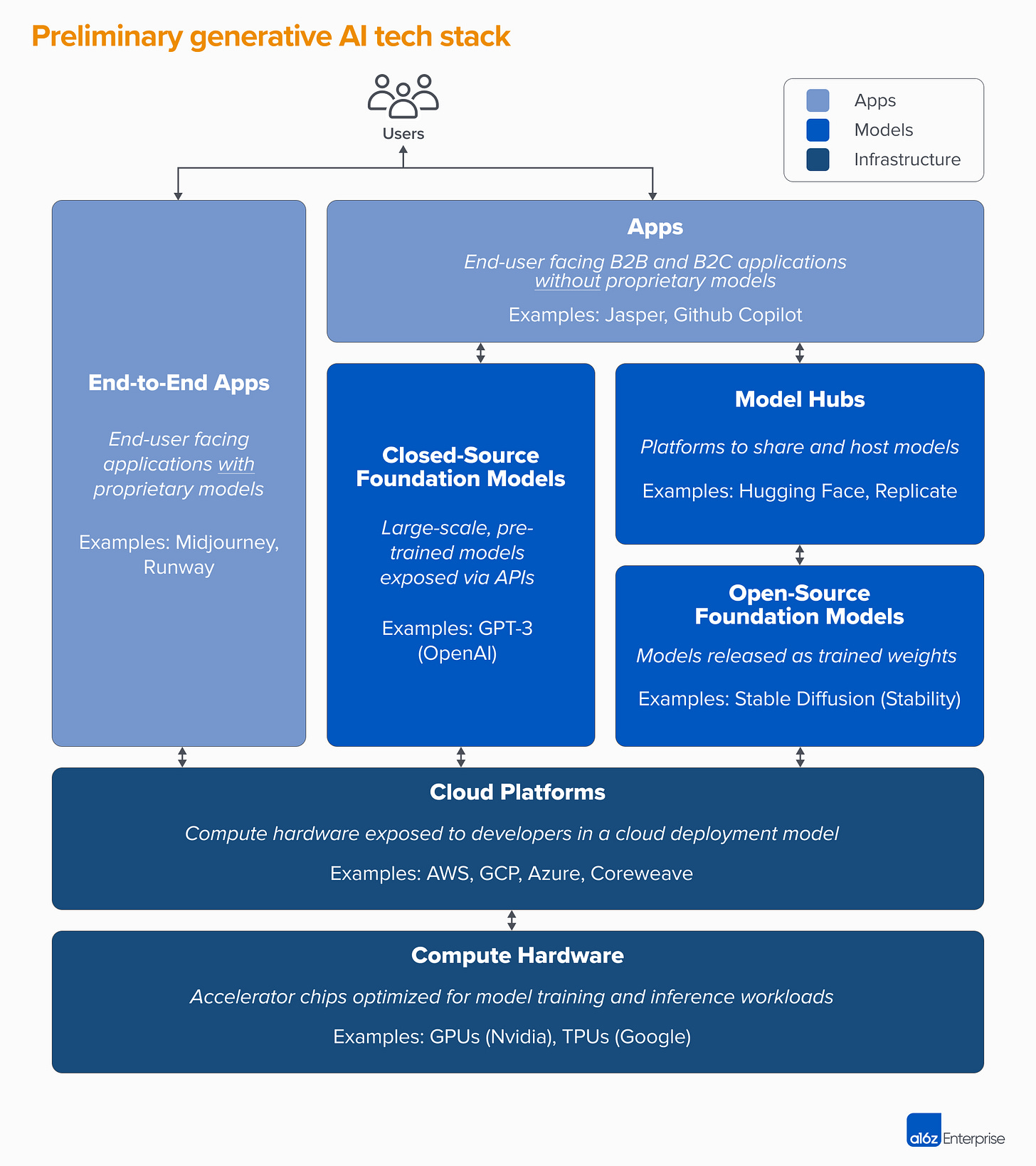
Do those of us in Aotearoa (of Māori or any descent) want Microsoft/OpenAI, Google/Anthropic and a few other US/Chinese tech giants to gatekeep access to all global cultural knowledge from now on via proprietary closed-source AI models? OR should open-source, open access, (non-censored) models be mandated by national and international laws instead? (And which legislatures are even starting to think about this now…!?)
Rollcall
A couple of shout-outs around the motu this week…
AI for conservation
Andrew Chen discusses AI for conservation with Anna and Kelly Pendergrast from Antistatic Partners and Victor Anton from Wildlife AI in this podcast from Koi Tū Centre for Informed Futures:
Beyond X Worlds
Te Whanganui-a-Tara-based indie VR studio Beyond revealed their upcoming 3D virtual world Gravitale in partnership with Chibi Labs:
Kōhatu huna2
Two wee gems which turned up in my Twitter feed this week:
💯Get SHIFTed
Getting out of the baking heat in Ōtautahi on Saturday, I visited the new SHIFT “Urban Art Takeover” at Canterbury Museum. I am well and truly blown away.
(Backstory: the whole museum is about to shut down for several years for long-planned total redevelopment and all of the exhibitions have been cleared out. In their place, the museum allowed a 50-strong collective of street artists loose everywhere inside…)
“Redevelopment looms and the Museum is empty. Empty, that is, except for the urban artists: hardy souls who have braved the cracks, the leaks, the ghosts of long-dead taxidermists to paint, project, paste-up, to shift this venerable institution into something colourful, something new.
Visit the Museum to explore the winding path they have created – a journey through five floors of urban art with surprises around every corner. Art on the walls, art on the ceilings, art in the galleries, the corridors, the offices, the storerooms. Art that engages with the Museum and the taonga it cares for, art that showcases urban art’s evolution and challenges our ideas of what a Museum can be.
Art that will soon disappear as suddenly as it appeared, never to be seen again. Do not miss it.“
The results are, frankly, incredible…so many new works and of such high quality and originality throughout. In such an interesting space, too. Just a few photos below to give a taster of what to expect. (Here’s an album of all the photos I took on my way round).
NZ$25 per head, exhibition will be shutting down soon. A globally unique experience not to be missed.
Go!
⏩More solutioneering…
(Paywalled for paid subscribers below…)
Keep reading with a 7-day free trial
Subscribe to Memia to keep reading this post and get 7 days of free access to the full post archives.




